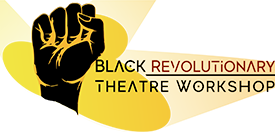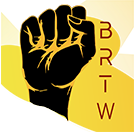Contrary to the popular narrative, there were more Black women actively involved in the American Civil War than Harriet Tubman and Sojourner Truth. While both of these extraordinary Black women deserve their accolades and should be celebrated with more accurate, dimensional depictions of their contributions to American history and the course of social justice, I would like to take the opportunity to acknowledge another: Mary Elizabeth Bowser.
We’ll never know how many women contributed to the war effort. Some historians estimate that at least 20,000 American women participated, most often as cooks and nurses. However, many women wanted to contribute to battlefield advances and military strategy as soldiers and spies. Mary Elizabeth Bowser was one such woman.
While we do know that Bowser was born into slavery, unfortunately, much of the concrete evidence surrounding Bowser is lost to history. Even the most widely accepted photo associated with her is now thought to be of another woman with the same name. The earliest record of her existence is her baptism in Richmond, Virginia as “Mary Jane Richards” in 1846. Years later, Elizabeth Van Lew, the abolitionist, sent Bowser to school in either Pennsylvania or New Jersey. Van Lew also arranged for Bowser to travel to Liberia in the mid-1850s. Bowser returned to Virginia by 1860 and married her husband, Wilson Bowser, the following year, just days before the opening battle of the American Civil War.
Elizabeth Van Lew was credited by a number of Union military leaders for her work organizing a spy ring. While much of the intelligence that they collected is lost to history, we do know that their efforts were extremely effective and important to Union efforts. Mary Elizabeth Bowser was not only an operative in the Van Lew spy ring, she was actually able to infiltrate the Confederate White House as a servant and send valuable intelligence to the Union from a number of sources. The deeply ingrained racial prejudice of the day allowed Confederate leaders to assume that their secrets wouldn’t eventually travel to Union ears, despite her presence. Additionally, many would have assumed that Bowser would have been illiterate. This deception would have only been more believable, because Bowser operated under a pseudonym while working in Confederate Territory.
In an attempt to protect the Union spies, Ulysses Grant and other Union leaders destroyed many of the records that would detail the exact nature of the intelligence they discovered and the obstacles they overcame. As a result, there are a number of legends surrounding Bowser that can never be substantiated. As Bowser was known to use pseudonyms, a number of identities, including the name, “Ellen Bond,” have been attributed to her. While some of her identities (Richmondia Richmonds, Mary Garvin) have been discovered, this one has never been substantiated. Further, because of her proximity to sensitive documents, literacy, position as a spy, and later role as an educator, Bowser developed a reputation for having a photographic memory. It is also said that Bowser attempted to burn down the Confederate White House before fleeing Richmond.
Following the war, Mary Elizabeth Bowser became a teacher and focused on educating the formerly enslaved. Continuing her use of pseudonyms, she went on a speaking tour, where she discussed Black education, traveling to Liberia, and her wartime efforts. She eventually opened a school in Saint Mary’s Georgia. There is no record of her death.

